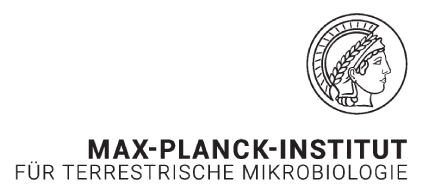Main Content
Structure and function of CO2-concentrating and -fixing mechanisms in chloroplasts
Jan Schuller, PHD NAME
Research question
How does the carbon concentration mechanism in the pyrenoid work? How is the localisation of Rubisco in the immediate vicinity of the channel and carbonic anhydrase ensured?
Background
The bioavailability of dissolved CO2 is a growth-limiting factor for photosynthetic algae such as C. reinhardtii due to low diffusion rates in the aqueous environment. Algae counteract this problem through the carbon concentration mechanism (CCM), which is realised by liquid-liquid phase separation (the pyrenoid, a highly concentrated arrangement of Rubisco) and active uptake systems. The CCM increases the local CO2 concentration proximal to the Rubisco enzyme. This adaptation is of great importance because Rubisco, in addition to its slow catalysing rate of CO2 fixation, also performs oxygenation by means of O2, which leads to photorespiration and thus impairs photosynthetic performance. The local CO2 increase shifts the reaction equilibrium in favour of CO2 fixation and reduces photorespiration in favour of photosynthetic efficiency. External CO2 is transported into the chloroplasts as soluble HCO3- and, via an imprecisely understood diffusion process, is presumably transported via HCO3- channels against the concentration gradient into the vicinity of Rubisco. There, the carbonic anhydrase CAH3 converts HCO3- to CO2 and accumulates CO2 directly at the active centre of Rubisco.
The function of these proteins and their interaction with other components of the pyrenoid is still completely unclear. However, this knowledge is essential for a general understanding and design of new, optimised CO2 fixation processes.


